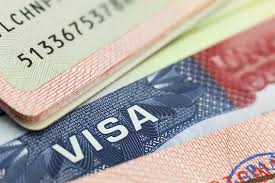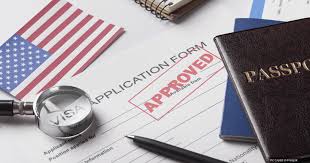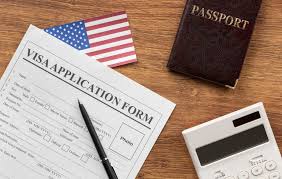Applying for a US Immigrant Visa: Key Requirements and Process

An immigrant visa is required for foreign nationals who want to live permanently in the United States. Unlike temporary visas that allow for short-term visits, an immigrant visa grants individuals the legal right to reside in the U.S. as lawful permanent residents. This visa is primarily used for family reunification, employment, and special categories such as refugees or asylum seekers.
The process of obtaining an immigrant visa can be a lengthy one, involving several critical steps. It requires a thorough understanding of the application process, eligibility criteria, and the types of visas available.
This article will provide an in-depth look at the immigrant visa application process, from determining your eligibility to receiving your visa approval. We’ll also cover the key requirements that applicants need to fulfill and some tips for navigating the process.
Types of Immigrant Visas
The U.S. offers several categories of immigrant visas, each catering to different reasons for immigration. The most common types are family-based and employment-based visas, though there are others for specific circumstances like diversity visas or refugee status.
Family-Based Immigrant Visas: These visas are designed for individuals who have close family members already residing in the U.S. U.S. citizens and lawful permanent residents can sponsor their relatives for immigration, depending on their relationship. Immediate relatives, such as spouses, children, and parents of U.S. citizens, are given priority. Other family members, including siblings and adult children of U.S. citizens, can also apply under the family preference category.
Employment-Based Immigrant Visas: Individuals with job offers from U.S. employers can apply for an employment-based immigrant visa. These visas are divided into various categories based on the applicant’s qualifications. For example, some visas are designed for those with extraordinary abilities, while others are for skilled workers or those with advanced degrees.
Diversity Visa Program: The Diversity Visa Lottery offers an opportunity for individuals from countries with low immigration rates to the U.S. to apply for permanent residence. The Diversity Visa (DV) program is based on random selection and provides a set number of visas annually to eligible individuals.
Refugee and Asylum Status: Individuals fleeing persecution or with a well-founded fear of persecution may qualify for a refugee or asylum visa. These categories allow individuals to apply for permanent residency after living in the U.S. for a certain period.
Eligibility Criteria for an Immigrant Visa
To be eligible for an immigrant visa, applicants must meet specific criteria based on the visa category they are applying for. Generally, these criteria fall into the following categories:
Family Relationships: For family-based immigrant visas, applicants must prove they are the immediate relative or family member of a U.S. citizen or lawful permanent resident. For example, a U.S. citizen can sponsor their spouse, minor children, and parents. The sponsor must submit a petition and provide supporting documentation of their relationship.
Employment Status: For employment-based immigrant visas, applicants must have a valid job offer from a U.S. employer, and the employer must prove that they require the applicant’s specific skills. Employment-based petitions usually require proof of the applicant’s qualifications, such as educational credentials, professional certifications, and work experience.
Financial Support: To ensure that applicants will not become a burden on the U.S. government, sponsors must provide evidence that they have the financial means to support the immigrant. This is usually done by submitting an Affidavit of Support (Form I-864), which confirms that the sponsor will financially support the applicant if necessary.
Health and Security Requirements: All immigrant visa applicants must undergo a medical examination by an approved physician. This is to ensure that the applicant does not have any communicable diseases that could pose a public health risk. Additionally, applicants must undergo security and background checks to ensure they have not committed any criminal acts or violated immigration laws.
Priority Dates and Visa Backlogs: Immigrant visas are subject to numerical limits each year, and some categories have long waiting lists, especially for family-based visas and certain countries with high demand. Applicants are assigned a priority date based on when their petition was filed. When their priority date becomes current, they can proceed with the visa application process.
The Immigrant Visa Application Process
The process of applying for an immigrant visa involves several stages, each requiring specific steps and documentation.
Petition Submission: The first step in the immigrant visa process is submitting a petition to the U.S. Citizenship and Immigration Services (USCIS). This petition is usually filed by a U.S. citizen or lawful permanent resident who is sponsoring the applicant. For family-based visas, the sponsor files Form I-130, and for employment-based visas, the employer files Form I-140.
Once USCIS approves the petition, the case is forwarded to the National Visa Center (NVC), which begins the process of preparing the case for a visa interview.
Visa Application: After the NVC receives your approved petition, you will need to fill out the DS-260 form, which is the application for an immigrant visa. This form collects biographical information, including your personal background, education, work history, and any past U.S. travel.
Along with the DS-260, you will be required to submit several supporting documents, such as your passport, birth certificate, police clearance certificate, medical examination results, and financial documents proving the sponsor’s ability to support you.
Visa Interview: After your application and documents are reviewed, you will be scheduled for an interview at the U.S. embassy or consulate in your home country. During the interview, a consular officer will ask you questions about your background, the reason for your immigration, and your plans in the U.S. The officer will also review your documents to verify your eligibility for the visa.
If everything is in order, the officer will approve your application and issue your visa. You will then receive a visa packet, which you must present to U.S. Customs and Border Protection when you enter the United States.
Arrival in the U.S. and Green Card Issuance: Once you arrive in the U.S., you will be processed by Customs and Border Protection (CBP). If you are approved for entry, you will receive a Green Card (Permanent Resident Card) in the mail, which grants you the legal right to live and work in the U.S.
Common Challenges in the Immigrant Visa Process
While many people successfully obtain their immigrant visa, there are several common challenges applicants may face, such as:
Long Wait Times: Due to visa limits and high demand, some applicants may experience long waiting periods before they can move forward with the application process. In particular, family-based visas for individuals from countries with high immigration rates may be delayed for years.
Visa Denials: A visa denial can happen for a variety of reasons, including incomplete or inaccurate documentation, failure to meet eligibility requirements, or issues with an applicant’s criminal history or immigration status.
Background Checks: Extensive background checks are conducted on immigrant visa applicants to verify that they have no criminal record or immigration violations. If there are any issues with an applicant’s background, it can delay the process or result in a denial.
Financial Issues: Applicants must prove that they will not become a financial burden on the U.S. government. If the sponsor cannot demonstrate sufficient financial support, the visa application may be denied.
Conclusion: Successfully Navigating the US Immigrant Visa Process
The U.S. immigrant visa process can be complex and time-consuming, but with careful preparation and understanding, it is possible to navigate it successfully. By following the steps outlined in this article and ensuring you meet all the requirements, you can improve your chances of obtaining your immigrant visa and starting a new chapter of your life in the United States.
Whether you are immigrating for family reasons, work, or refugee status, the U.S. offers a range of pathways for individuals seeking permanent residency. By staying informed, preparing thoroughly, and working with experienced immigration professionals, you can achieve your goal of living and working in the U.S.




